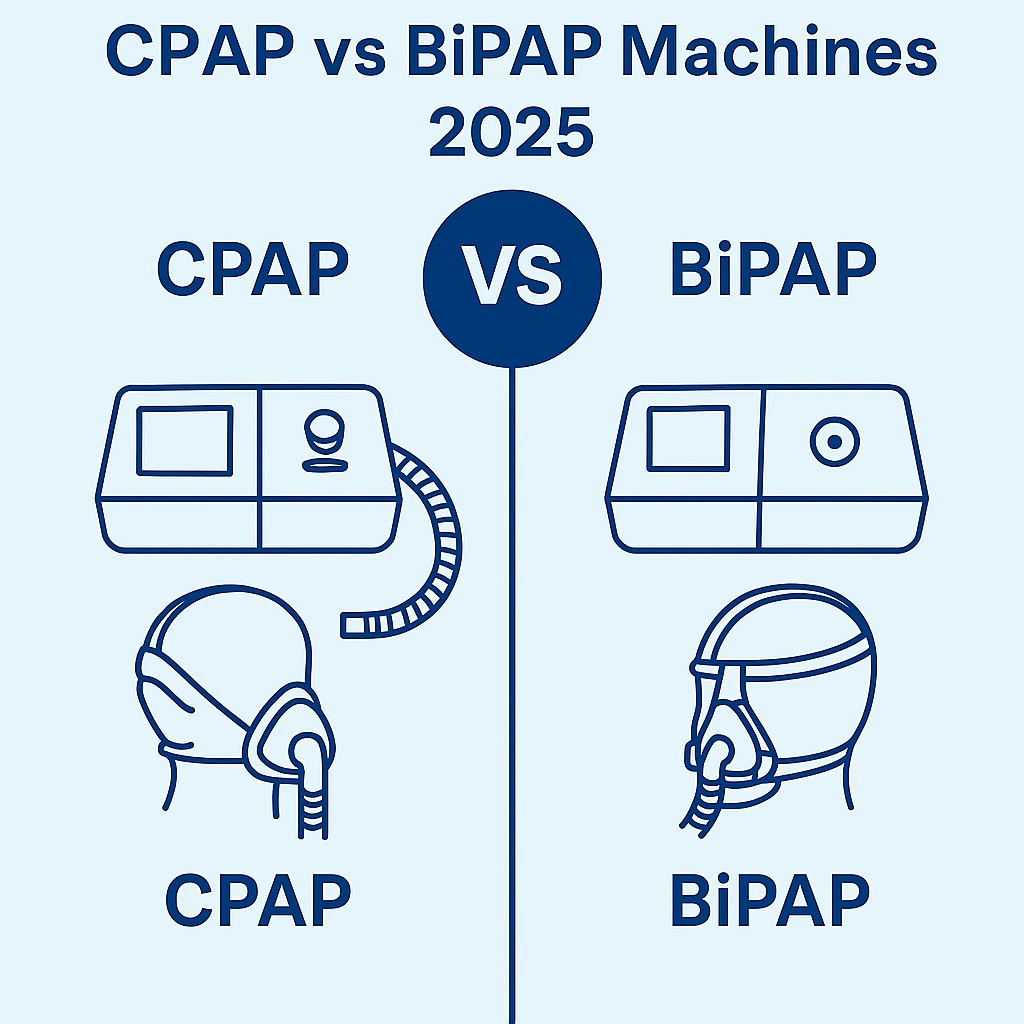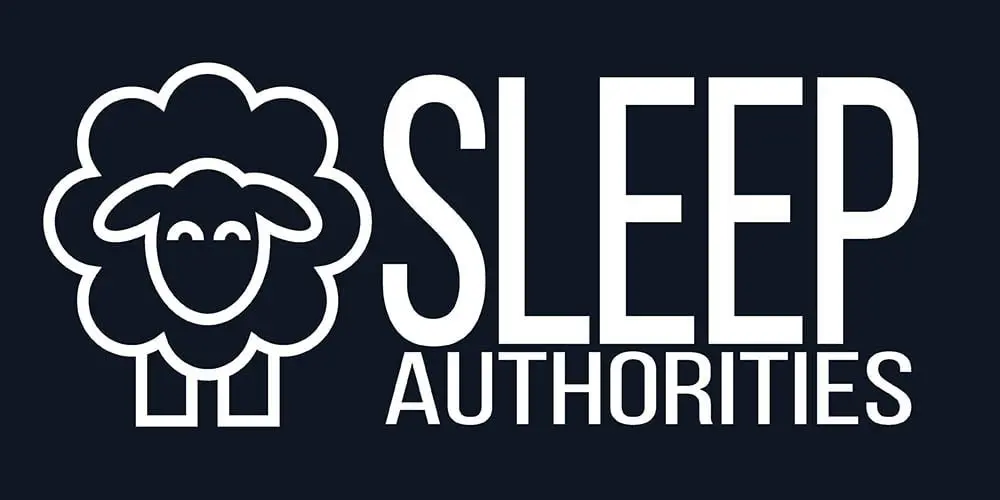Struggling to choose between a CPAP or BiPAP machine for sleep apnea in 2025? You’re not alone. With advanced technology and new therapy options hitting the market, understanding the key differences between these two popular treatments has never been more important.
Sleep apnea doesn’t just disrupt your rest—it impacts your heart, brain, and overall health. That’s why finding the right machine matters. CPAP (Continuous Positive Airway Pressure) and BiPAP (Bilevel Positive Airway Pressure) both offer effective relief, but they work in different ways and suit different needs.
In this updated guide, we’ll break down how CPAP and BiPAP machines compare in 2025, what’s new in the latest models, and how to decide which one is the best fit for your sleep, comfort, and long-term health.
What Is Sleep Apnea and Why Does It Matter?
Sleep apnea is a serious and common sleep disorder where breathing repeatedly stops and starts during sleep. These pauses can last from a few seconds to minutes and may happen dozens of times per night. It often leads to poor sleep quality and serious health risks if left untreated.
Sleep apnea can affect people of all ages and is often linked to obesity, aging, or medical conditions like heart disease. There are three main types:
- Obstructive Sleep Apnea (OSA): Caused by throat muscles relaxing too much
- Central Sleep Apnea (CSA): The brain fails to send the proper signals to muscles that control breathing
- Complex Sleep Apnea: A combination of both OSA and CSA
Common Symptoms of Sleep Apnea
- Loud snoring
- Gasping for air during sleep
- Morning headaches
- Dry mouth
- Irritability or mood swings
- Daytime fatigue, even after a full night’s sleep
These symptoms can go unnoticed for years, making it important to consult a doctor or sleep specialist if they persist.

How CPAP and BiPAP Help Treat It
Treatment often involves PAP (positive airway pressure) therapy:
- CPAP (Continuous Positive Airway Pressure): Delivers a constant stream of air through a mask to keep the airways open
- BiPAP (Bi-level Positive Airway Pressure): Offers two pressure settings—higher pressure for inhaling (IPAP) and lower pressure for exhaling (EPAP)
While both are effective, the choice depends on the type and severity of the sleep apnea. CPAP is usually the first line of treatment, while BiPAP is often prescribed if CPAP is not well-tolerated or if the condition is more complex.
CPAP vs BiPAP – Key Differences
While both CPAP and BiPAP machines help treat sleep apnea by delivering pressurized air, they do so in different ways. Understanding these differences can help determine which option is best for your specific sleep needs.
How CPAP Machines Work
CPAP stands for Continuous Positive Airway Pressure. These machines deliver a steady, constant flow of air pressure to keep your airways open during sleep. The pressure is the same whether you are inhaling or exhaling.
CPAP is generally recommended as the first treatment for obstructive sleep apnea (OSA) and is known for its simplicity and effectiveness.
How BiPAP Machines Work
BiPAP stands for Bi-level Positive Airway Pressure. These machines offer two pressure levels:
- IPAP (Inspiratory Positive Airway Pressure) – higher pressure when you inhale
- EPAP (Expiratory Positive Airway Pressure) – lower pressure when you exhale
BiPAP is usually prescribed for people who struggle to exhale against the constant pressure of a CPAP machine, or for those with more complex forms of apnea.
Pressure Settings Compared
- CPAP: Single, fixed pressure throughout the night (though some models offer auto-adjusting pressure)
- BiPAP: Two distinct settings for inhalation and exhalation, which can improve comfort and reduce breathing effort
When to Use CPAP vs BiPAP
- Use CPAP if:
- You have mild to moderate obstructive sleep apnea
- You can tolerate a steady pressure throughout the night
- Use BiPAP if:
- You have central or complex sleep apnea
- You struggle with exhaling on CPAP
- You need higher pressure settings or more respiratory support
Both machines require a prescription and should be chosen with the help of a sleep specialist or respiratory therapist.
CPAP Machines Explained
CPAP machines are the most common form of positive airway pressure therapy used to treat sleep apnea—specifically Obstructive Sleep Apnea (OSA). These devices deliver a continuous stream of air through a mask to keep your upper airway open while you sleep.
Conditions Treated by CPAP
CPAP therapy is primarily used to treat:
- Obstructive Sleep Apnea (OSA)
- Snoring related to OSA
- Sleep-related breathing disorders
- Occasionally used post-surgery to maintain open airways
Pressure Range and Airflow
- Standard CPAP machines deliver air at a fixed pressure
- Pressure typically ranges from 4 to 20 cm H2O
- Auto-CPAP machines (APAP) adjust pressure automatically based on breathing patterns throughout the night
The consistent pressure helps prevent airway collapse, reducing apnea events and improving overall sleep quality.
Who Should Use CPAP?
CPAP therapy is ideal for:
- People diagnosed with moderate to severe Obstructive Sleep Apnea
- Individuals who experience frequent snoring and fatigue due to airway blockage
- Patients who can tolerate a fixed pressure setting comfortably
- Those with a prescription and sleep study confirmation from a doctor
CPAP is typically the first treatment option recommended for OSA and has a strong success rate when used consistently.
BiPAP Machines Explained
BiPAP (Bi-level Positive Airway Pressure) machines are designed for people who need more complex support than what a standard CPAP machine provides. Unlike CPAP, BiPAP delivers two different pressure levels: one for inhaling and one for exhaling.
IPAP vs EPAP: Dual Pressure Settings
- IPAP (Inspiratory Positive Airway Pressure): Higher pressure for breathing in
- EPAP (Expiratory Positive Airway Pressure): Lower pressure for breathing out
These dual settings help reduce the effort needed to exhale and can be more comfortable for people with advanced breathing conditions.
Timed, Spontaneous, and Spontaneous/Timed Modes
BiPAP machines may include different operating modes:
- Spontaneous (S): Adjusts pressure based on natural breathing
- Timed (T): Delivers pressure at a fixed rate regardless of user effort
- Spontaneous/Timed (S/T): A hybrid mode that switches between spontaneous and timed based on the user’s breathing
These modes are useful for individuals with central sleep apnea or neuromuscular disorders where consistent breathing patterns are not always maintained.
Who Should Use BiPAP?
BiPAP therapy is typically recommended for:
- People with Central Sleep Apnea (CSA)
- Individuals with Complex or Mixed Sleep Apnea
- Patients with COPD or other lung-related illnesses
- Sleep apnea patients who cannot tolerate CPAP
BiPAP offers more personalized support and flexibility, especially for those with specific respiratory needs or poor response to CPAP therapy.
Choosing Between CPAP and BiPAP
If you’re new to sleep therapy or considering a change in treatment, understanding how to choose between CPAP and BiPAP is key. Both devices offer powerful support, but they serve different needs and patient profiles.
Medical Conditions That May Influence Your Choice
- CPAP is usually recommended for:
- Obstructive Sleep Apnea (OSA)
- Mild to moderate sleep apnea cases
- Snoring without other complications
- BiPAP may be needed if you have:
- Central Sleep Apnea (CSA)
- Complex or mixed sleep apnea
- Chronic obstructive pulmonary disease (COPD)
- Neuromuscular disorders or other respiratory illnesses
- Trouble tolerating CPAP due to exhaling difficulty
What to Expect When Starting CPAP or BiPAP
- Adjustment period: It takes time to get used to wearing a mask and sleeping with airflow
- Dryness or nasal irritation: Can be improved with humidifiers or nasal sprays
- Better energy and alertness: Often seen after regular use
- Follow-up sleep study or data review: Your doctor may adjust pressure settings based on your results
Transitioning from CPAP to BiPAP (Doctor’s Approval Required)
You should never switch devices without consulting your physician. BiPAP settings are more complex and typically require a prescription update and possibly another sleep study.
Transitioning usually happens when:
- CPAP therapy is ineffective or uncomfortable
- You’re diagnosed with CSA or another condition needing dual pressure
- A specialist recommends the change for long-term respiratory management
Choosing the right machine ensures better treatment outcomes and long-term comfort.
CPAP vs BiPAP Comparison Table
Understanding the key differences between CPAP and BiPAP machines can help you and your doctor choose the best treatment for your sleep apnea or respiratory condition. Here’s a simplified comparison for 2025.
Key Features at a Glance
| Feature | CPAP | BiPAP |
|---|---|---|
| Pressure Settings | Single, fixed or auto-adjusted | Dual (IPAP and EPAP) |
| Best for | Obstructive Sleep Apnea | Central/Complex Sleep Apnea, COPD |
| Mode Options | Auto (APAP) | S, T, S/T Modes |
| Mask Compatibility | Universal | Universal |
| Ramp Feature | Yes | Yes |
| Noise Level | Quiet | Quiet |
Cost, Monitoring, and Comfort Compared
| Comparison Point | CPAP | BiPAP |
|---|---|---|
| Average Cost (2025) | $400 – $900 | $1,200 – $2,500 |
| Comfort Level | May feel forced when exhaling | Easier exhalation, more natural |
| Data Monitoring | Built-in with most models | Advanced tracking with more detail |
| Prescription Requirement | Yes | Yes |
| Ease of Use | Simpler | More settings to manage |
Both machines are effective when used as prescribed. Comfort, cost, and condition-specific needs often guide the final choice.
Final Thoughts – Which Therapy Is Right for You?
CPAP and BiPAP machines both play a vital role in managing sleep apnea and other respiratory disorders. The key to choosing the right device lies in understanding your specific needs, symptoms, and diagnosis.
Talk to Your Doctor or Sleep Specialist
Never self-diagnose or start therapy without medical supervision. A licensed physician or sleep specialist will:
- Conduct a sleep study (polysomnography)
- Diagnose the type and severity of sleep apnea
- Recommend the most suitable device (CPAP or BiPAP)
- Set up and monitor pressure levels for safety and effectiveness
Following a personalized treatment plan ensures maximum benefit and long-term success.
Importance of Getting Diagnosed and Treated
Untreated sleep apnea can lead to:
- High blood pressure
- Heart disease
- Stroke
- Depression and anxiety
- Daytime fatigue and impaired concentration
Proper treatment with the right device can:
- Improve sleep quality and energy levels
- Reduce the risk of cardiovascular complications
- Improve mood and cognitive performance
- Enhance overall health and quality of life
Whether you start with CPAP or need BiPAP later, early diagnosis and consistent therapy are critical for better health and restful sleep.





